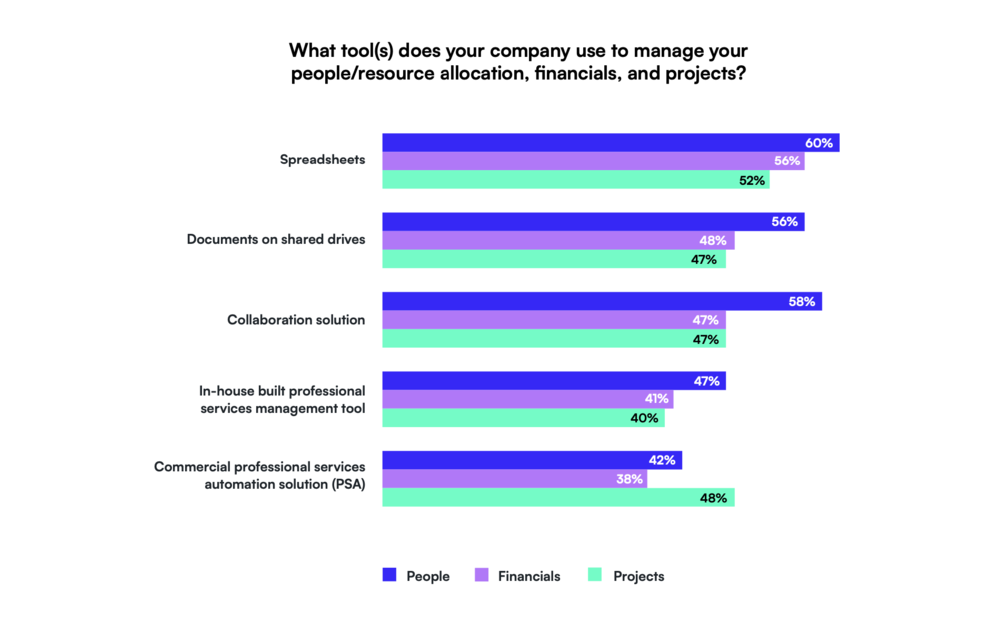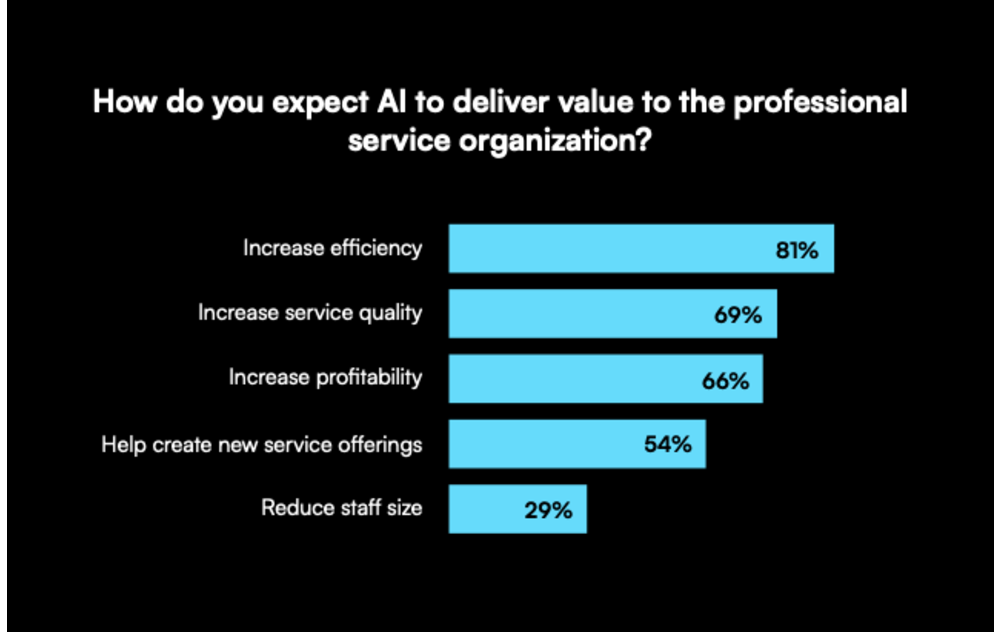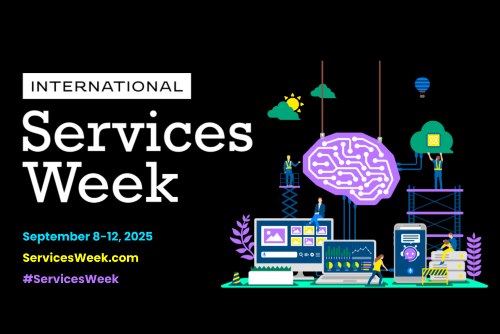New Global Service Dynamics 2024 report reveals biggest challenges and opportunities for PSOs

Despite the massive opportunity presented by AI for the services industry, 54% of services leaders surveyed report that adapting to AI will be one of their biggest external challenges over the next year.
That’s just one of the big takeaways from our inaugural Global Service Dynamics Report, based on a survey conducted by market research firm Dimensional Research of over 1,000 professional services organization (PSO) leaders and executive decision-makers across key global markets.
The report provides insights into trends and opportunities observed by services leaders, with the primary goal of understanding the key external and internal challenges they will face over the next 12 months and the strategies they plan to employ to mitigate them.
The data reveals that while AI is perceived as a challenge, it’s also an opportunity for PSOs to reach their business objectives and respond to the economic downturn.
PSOs can (and should!) be a profit center for businesses when managed efficiently. One avenue to drive that efficiency is the strategic deployment of AI to boost the capacity of teams — not replace them.
Below we dive deeper into some of the industry dynamics we discovered.
The economy and AI are driving strategies for professional service organizations
You read correctly; the state of the economy and AI are reported as services leaders’ top two challenges facing their business — outranking competition and a tight market for skilled professional services labor.
Although economic uncertainty is beyond their control, businesses can build resilience by improving their work processes. To succeed, they must evaluate their AI maturity and equip themselves with the necessary skills, tools, and resources.
While AI is recognized as a threat, PSOs are also looking for ways to use AI as an advantage. When asked specifically how AI will help the professional services teams, the top answers were to increase efficiency (81%), improve service quality (69%), and increase profitability (66%).
PSOs should have a seat at the table for corporate growth strategies
As interest rates stay in flux and access to capital is constrained, increasing business profitability is vital. The report found efficiency and profits rank top of mind for 2024, and services teams are being used to grow revenue and help mitigate economic challenges.
Virtually every company (99%) expects their PSO to contribute significantly towards achieving its key business objectives. In fact, nearly two-thirds (63%) see their PSO teams as a profit center, earning these teams a seat at the table when charting corporate growth strategies.
PSOs also have a growth mindset. A majority (82%) of those surveyed increased their PSO team size in 2023, with even more companies (85%) planning to grow their teams in 2024.
Outdated internal procedures remain a major roadblock to efficiency
The findings made one thing very clear – efficiency is top of mind for executives when measuring success. Yet, half of companies reported having a resource utilization rate of 66% or worse.
Highly effective teams that consistently drive profits often boast utilization rates exceeding 70%, while lower rates tend to correlate with either breaking even or delivering unprofitable results. So, where’s the disconnect?
When asked what solutions were used to manage key elements of services delivery (people, projects, and profit) the dominant solution at every step of the services journey was… spreadsheets.

This rings true in the data, as less than half of service organizations utilize a commercial Professional Services Automation (PSA) solution, despite the documented impacts such applications have on enhancing efficiency, profitability, workload balance, and overall employee and customer satisfaction.
AI is for efficiency, not replacement.
More than 80% of firms surveyed reported seeing AI as an avenue to increase efficiency, while less than one-third plan to use AI to reduce staff size. These organizations are focused on improving training programs, offering diverse project opportunities, and fostering avenues for personal and professional growth as a means of employee retention.
It becomes evident that harnessing AI’s potential to enhance efficiency, rather than replace human teams, is key to success in the modern services economy.
Services teams positively impact business performance, as they can adapt quickly, provide needed skills throughout other areas of the organization, and influence customer satisfaction and growth. To achieve those objectives, PS leaders indicated they need to move away from an ad hoc tool approach and implement a dedicated professional service solution, and one that leverages AI for maximum returns. We’re committed to partnering with PSOs everywhere as they embrace technology to propel their service operations forward. To view the full Global Service Dynamics 2024 report and its findings, visit Certinia.com/Services-Report.
Recent Articles
Maximize your Salesforce investment with Certinia







